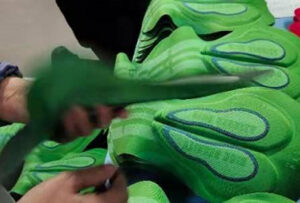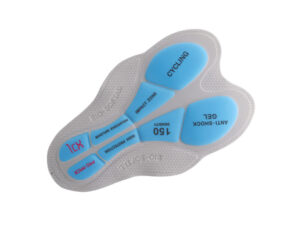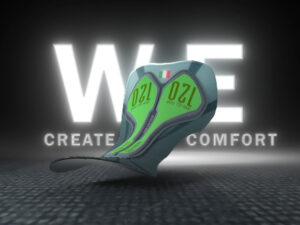Introduction to Cycling and Health
Cycling, a harmonious symphony of physical exertion and environmental communion, emerges as an increasingly favored form of exercise, offering many health benefits. It’s a low-impact activity that enhances cardiovascular fitness, muscular strength, and flexibility while aiding in weight management. The gentle nature of cycling makes it accessible to a wide demographic, catering to varied fitness levels and age groups.
Beyond its physical attributes, cycling also contributes to mental well-being. It’s a stress reliever, a mood booster, and a gateway to outdoor exploration. This engagement with nature and the environment plays a crucial role in mental health, providing a respite from the daily grind.
Understanding Cycling Pads
Delving into cycling equipment, cycling pads, also known as chamois, are an essential component, albeit often overlooked. Nestled within cycling shorts, these pads are pivotal in cushioning and protecting the rider. They come in various shapes, sizes, and materials, each designed to cater to different cycling styles and anatomical needs.
The evolution of cycling pads reflects technological advancements and a deeper understanding of rider comfort. These pads have transformed significantly from the early leather chamois to modern synthetic materials, enhancing the cycling experience.
The Role of Cycling Pads in Preventing Discomfort
Comfort is paramount in any physical activity, especially in cycling, where prolonged periods are spent sitting. Cycling pads play a crucial role in this context. They mitigate discomfort caused by continuous friction and pressure on the pelvic region. This comfort is not merely about avoiding temporary unease but enhancing overall performance and endurance.
Cyclists often face issues like chafing, soreness, and skin irritation. If not addressed, these discomforts can escalate into more severe problems, deterring one from continuing the activity. Cycling pads, with their cushioning effect, act as a barrier, reducing the impact of these common issues.
Preventing Injuries with Proper Cycling Pads
The protective aspect of cycling pads extends beyond mere comfort. They are instrumental in preventing injuries related to cycling. The repetitive motion and pressure exerted on the pelvic and perineal areas can lead to conditions like nerve compression, skin infections, and even long-term vascular issues.
The design of cycling pads, incorporating aspects like thickness, density, and shape, is based on scientific research. This research focuses on reducing pressure points and improving blood flow, thereby preventing potential injuries.
Anatomy and Cycling Pad Selection
One size does not fit all when it comes to cycling pads. The human anatomy varies greatly, and this variation demands a personalized approach to selecting the right pad. Factors like bone structure, pelvic rotation, and personal sensitivity are crucial in this selection.
For instance, wider sit bones might require a broader pad, while a more aggressive riding posture might need a pad with a different pressure distribution. Recognizing these nuances is essential for a comfortable and injury-free cycling experience.
Material Matters: Choosing the Right Fabric for Cycling Pads
Cycling pads are crafted from diverse materials, each offering unique benefits. Traditional pads were made from natural leather, but modern versions primarily utilize synthetic fabrics. These materials range from high-tech foam to gel inserts, designed to provide optimal cushioning and moisture control.
The choice of material affects breathability, moisture-wicking properties, and durability. For instance, gel pads might offer superior cushioning but could be less breathable than their foam counterparts. Understanding these trade-offs is key to selecting the right pad.
Size and Fit: Ensuring Your Cycling Pad Fits Perfectly
The efficacy of a cycling pad heavily depends on its size and fit. An ill-fitting pad can negate all its benefits, leading to discomfort and potential injuries. The fit should complement one’s body shape and cycling posture.
Taking the sit bone width and the type of cycling into consideration—whether road, mountain, or casual—will help you choose the right size. Additionally, trying different styles and brands may be necessary to find the perfect match.
Maintenance and Care for Cycling Pads
Maintaining the integrity and hygiene of cycling pads is essential for their longevity and effectiveness. Regular cleaning, following the manufacturer’s care instructions, is vital. This maintenance not only preserves the pad’s material but also prevents bacterial build-up, which can lead to skin infections.
The lifecycle of a cycling pad depends on its care and the frequency of use. Regular wear and tear signs inspection ensures the pad remains functional and safe.
Conclusion: Integrating the Right Cycling Pad into Your Routine
In conclusion, the right cycling pad is not just an accessory but a necessity for any cyclist. It ensures comfort, prevents injuries, and enhances the overall cycling experience. This article underscores the importance of considering individual anatomical needs, the right material, size, and fit, and the maintenance of cycling pads.
As cyclists, it’s crucial to prioritize health and comfort by selecting the appropriate cycling pad. Doing so improves performance and ensures a sustainable and enjoyable cycling journey.




